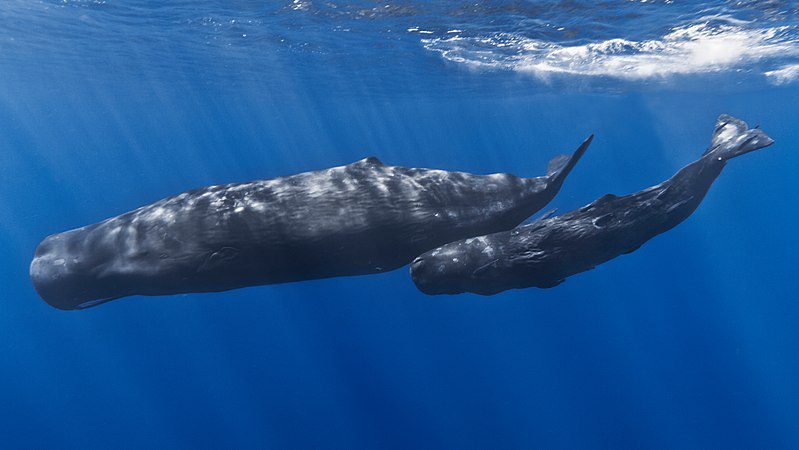Sperm Whales
Sperm whales (Physeter macrocephalus) are the largest members of the toothed whales (odontoceti), unique in their shape by having conspicuously large heads, containing a milky white substance called spermaceti (early whalers incorrectly believed this substance to be sperm, hence their name). Spermaceti (literally “whale-sperm”) is a waxy substance formally used in cosmetics, the perfume industry, as a lubricant, among other uses. Years later, the oil of the jojoba plant proved to be equally efficient as an alternative to slaughtering whales.
TALK TO A DESTINATION EXPERT

Diego Zapata

Rosa Mena

Sandy Lara

Diego Zapata

Rosa Mena

Sandy Lara
These whales grow to enormous proportions, with males reported to exceed 20 meters of length (67 feet) reaching impressive weights of over 50 tonnes. Females may score nearly half of the male’s proportions. At birth, sperm whales measure 4 metres/1 tonnes!

They also possess the largest and heaviest of all brains in nature.
The behavior observed is often referred to as “logging”. This is floating at the surface of the sea, believed to be time for resting and socialization. When sperm whales forage for food (mostly giant squid) they may go to extreme depths of over 2000 meters for well over one hour each dive!

Javier Garcia

Eduardo Silva

Carolina Escobar
START PLANNING YOUR TRIP

Javier Garcia

Eduardo Silva

Carolina Escobar
Get in touch for more
CONTACT US
Sperm Whales have been actively hunted for centuries in the Galapagos Islands, especially in the early 19thcentury, until their numbers reduced significantly towards the 1860s, making the long journey to Galapagos no longer profitable. Sperm whales continued to be hunted in the Pacific until the 1980s. Even after hunting had stopped, the global population of these cetaceans has not shown signs of recovery, and sightings have become less common. Researchers believe the pods may have moved to other feeding grounds along with the Pacific Oceans. This comeback of sperm whales is celebrated among naturalists and researchers, it’s also an achievement that proves that sustainable travel is key in maintaining the archipelago’s ecosystem.


